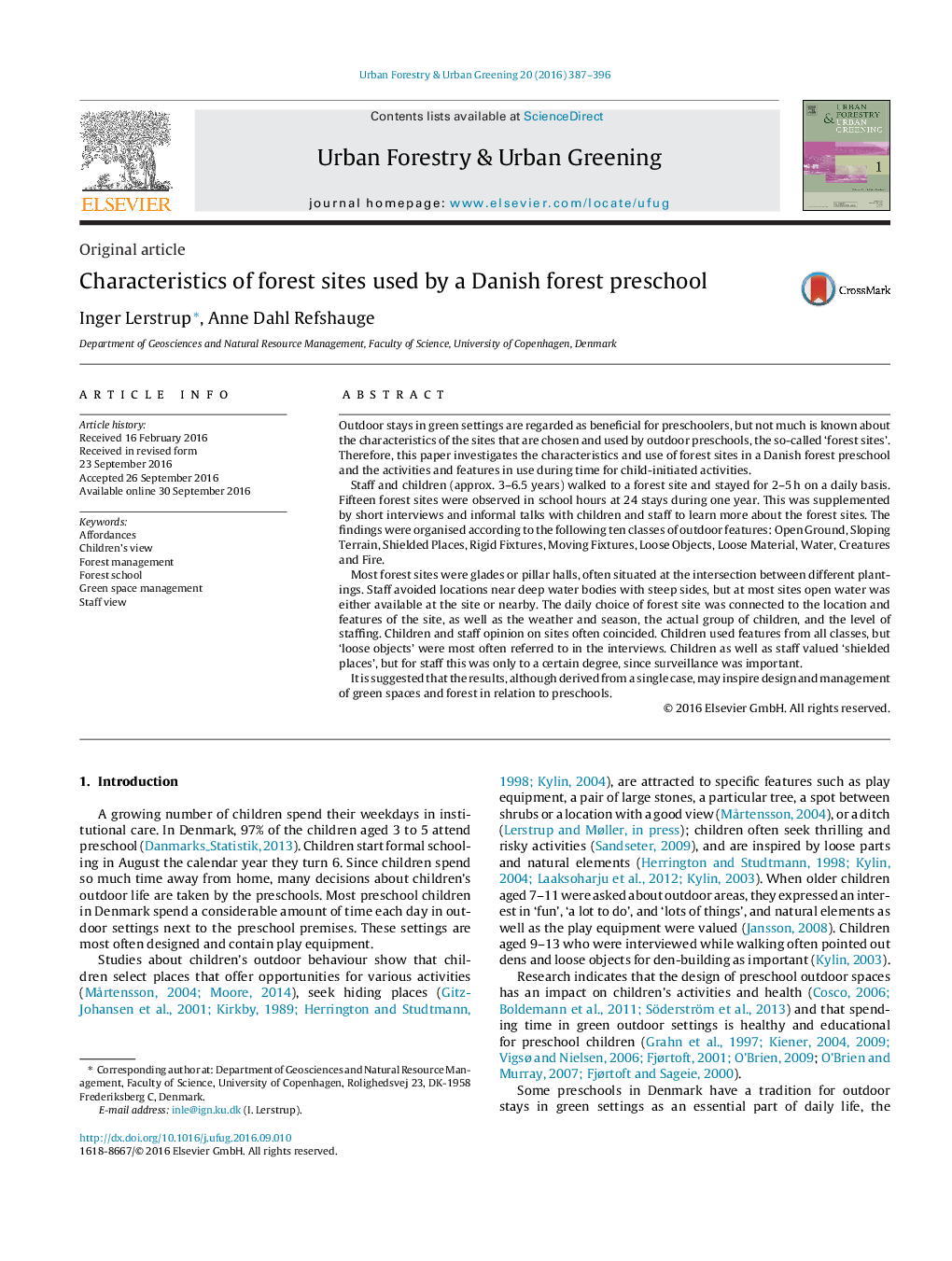| کد مقاله | کد نشریه | سال انتشار | مقاله انگلیسی | نسخه تمام متن |
|---|---|---|---|---|
| 6461978 | 1421870 | 2016 | 10 صفحه PDF | دانلود رایگان |
- Forest sites are named places in green settings used by preschools.
- Children know many forest sites, ask for loose objects and enjoy changes.
- Staff asks for climbing objects, ditches, swaying trees, open ground and hidings.
- Staff asks for sites with and without open water; risk is not a big issue.
- Choices depend on affording features/educational goals/distance/overview/staffing.
Outdoor stays in green settings are regarded as beneficial for preschoolers, but not much is known about the characteristics of the sites that are chosen and used by outdoor preschools, the so-called 'forest sites'. Therefore, this paper investigates the characteristics and use of forest sites in a Danish forest preschool and the activities and features in use during time for child-initiated activities.Staff and children (approx. 3-6.5 years) walked to a forest site and stayed for 2-5Â h on a daily basis. Fifteen forest sites were observed in school hours at 24 stays during one year. This was supplemented by short interviews and informal talks with children and staff to learn more about the forest sites. The findings were organised according to the following ten classes of outdoor features: Open Ground, Sloping Terrain, Shielded Places, Rigid Fixtures, Moving Fixtures, Loose Objects, Loose Material, Water, Creatures and Fire.Most forest sites were glades or pillar halls, often situated at the intersection between different plantings. Staff avoided locations near deep water bodies with steep sides, but at most sites open water was either available at the site or nearby. The daily choice of forest site was connected to the location and features of the site, as well as the weather and season, the actual group of children, and the level of staffing. Children and staff opinion on sites often coincided. Children used features from all classes, but 'loose objects' were most often referred to in the interviews. Children as well as staff valued 'shielded places', but for staff this was only to a certain degree, since surveillance was important.It is suggested that the results, although derived from a single case, may inspire design and management of green spaces and forest in relation to preschools.
352
Journal: Urban Forestry & Urban Greening - Volume 20, 1 December 2016, Pages 387-396
